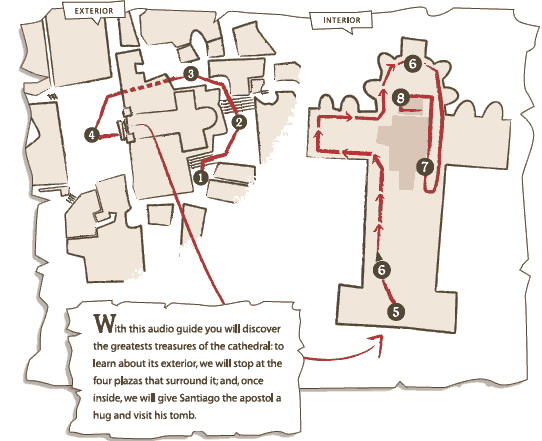Declared Historic-Artistic Monument in 1986.
In the 9th century, Bishop Teodomiro of Iria Flavia identified a small Roman temple with the tomb of the Apostle St. James. As a result of this discovery, King Alfonso 2nd "The Chaste" ordered a modest church to be erected around this pagan construction. The increase in pilgrimages and a certain stability after Arab attacks led to a new construction, begun in the year 1075, during the reign of Alfonso 6th and under the direction of Archbishop Diego de Peláez. Work started on the Romanesque cathedral, continued during the period of Archbishop Diego Gelmírez, and did not stop until it became the large building we can see today.




